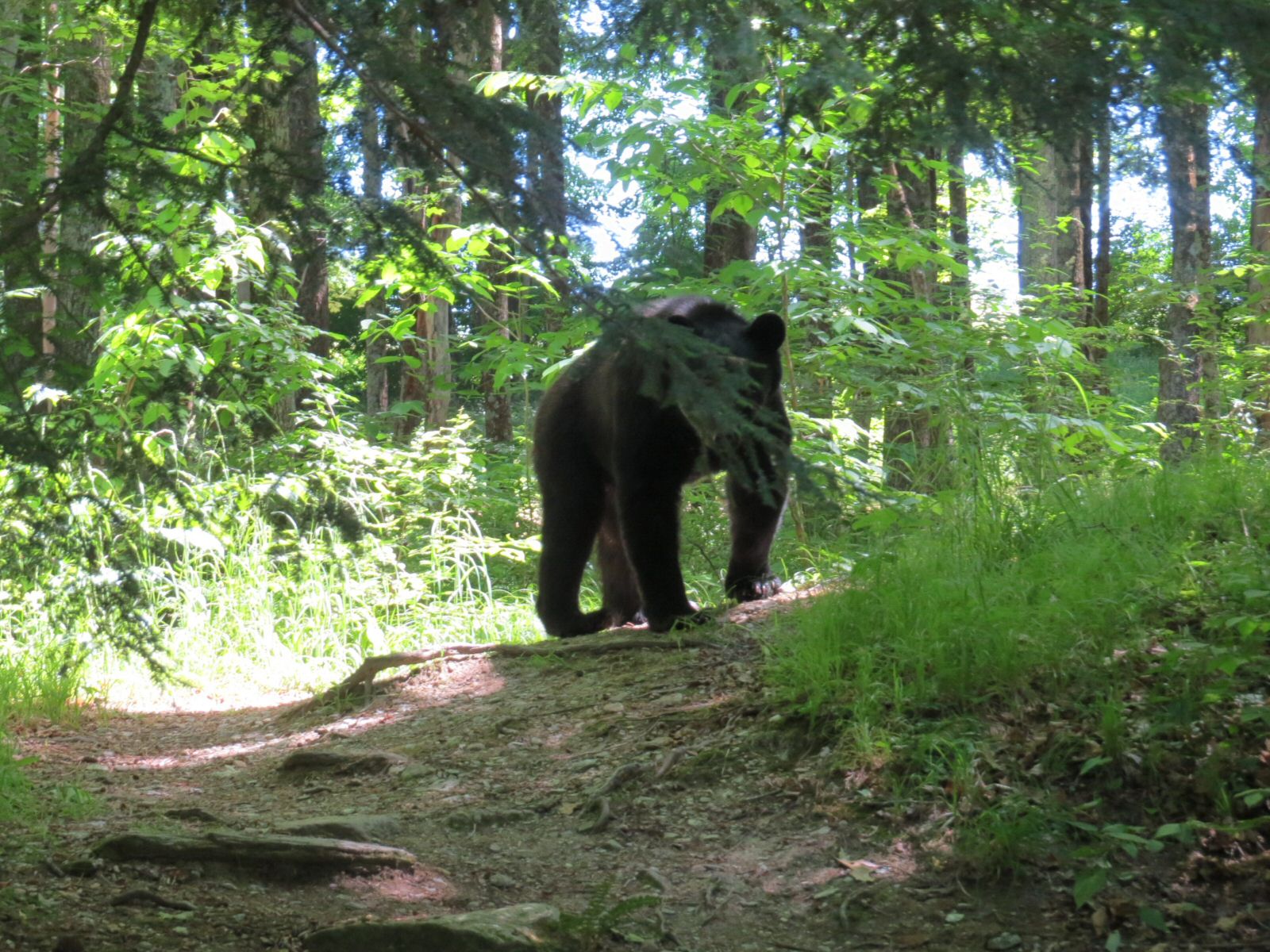
Black Bear
Notes and Changes since last report
- It was 80°F, clear and breezy at 12:45 PM on June 17, 2020.
- This week's trail report covers the Cary Pines Trail side of the trail system.
- Surprisingly, butterfly activity was low today.
- Bears are routinely seen on the property. I'm always asked if I've seen one. I can no longer answer, "No".
The Trails
- A sound must have roused me from pulling narrow-leaved bittercress by the Watershed kiosk on the Wappinger Creek Trail. We both stared at each other in surprise. Remembering my "bear etiquette", I stood up, making myself big, and started slowly backing away. My camera was already in hand, so a parting shot was just the push of a button. What happens when you try to photograph wildlife? Yup, it runs away. I should have thought of that first.
- Of course it went off the way I was going to go, so it was a while before I proceeded, talking loudly, suggesting all the convenient places a bear might cross to the other side of the Wappinger Creek.
- It was a long noisy walk before I came upon flowering partridgeberry on the Cary Pines Trail.
- The buds were as pretty as the flowers.
- Starflower was making its tiny seeds now.
- And Canada mayflower was producing berries.
- Something flew by and disappeared in the leaves when I stood up again.
- It was a red-spotted purple. It's background color should have been black, but the lighting did some tricks.
- Looking behind (I was doing alot of that now), I was struck by the stark shadows on bark.
- In the little hillside above the Fern Glen, something too slow for a skipper landed near by: a pair of net-winged beetles on a color coordinated leaf.
- Farther along, a widow skimmer was darting out and back to its perch.
- Interestingly, at a better viewing angle, the white bands that distinguish the male disappeared.
- At the top of the Fern Glen proper, common wood sorrel was blooming since last week.
- Another hold over from earlier days blooming today was, Valeriana, native to Europe and Asia.
- The flower head is interestingly square.
- Throughout the 'Glen, the occasional fern frond will be found with its tip rolled into a ball. One of several caterpillars would be responsible for building this little shelter.
- Along the boardwalk in the fen, maleberry was blooming, looking much like tiny blueberry.
- Across the aisle, elderberry was real close to blooming.
- Just beyond that, poison sumac was just beginning.
- The sparse, white flowers are nothing like the dense, red spike of the more common (and non-poisonous) staghorn sumac.
- Our native panicled hawkweed is tall and delicate compared to the more familiar short, alien species.
- The flowers were just opening.
- On the path by the main kiosk, Bowman's root had been blooming since last week.
- Out at the front of the pond, the big river birch was host again to the velvet gall.
- This unlikely, brilliant red gall is prompted by a tiny mite.
- Near the kiosk by the front of the pond was gray dogwood.
- The small, white flowers have a funky smell that harkens back to childhood days.
- Right next to that was the tortured Turk's cap lily. All the lower leaves had been eaten by the scarlet lily beetle (or its offspring) from Eurasia. Diligent search and squash patrols have effectively reduced its numbers.
- Back on the Cary Pines Trail, white avens was blooming along the side.
- The flower is small, but distinct.
- Everybody recognizes invasive garlic mustard with seed pods ripening.
- A bumble bee flew by too fast and landed. It was a robber fly.
- Next week: The Wappinger Creek Trail side of the trail system.
Sightings
Birds
| Butterflies
Mammals
Plants
|
